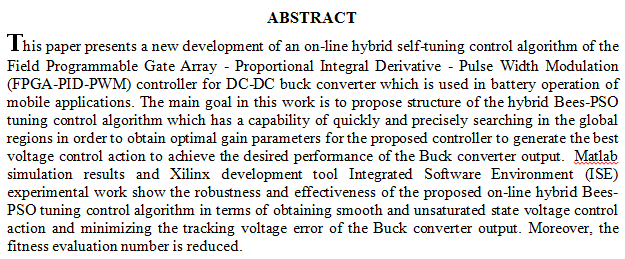
This paper represents an experimentalattempt to predict the influence of CO2-MAG welding variables on the shape factors of the weld joint geometry. Theinput variables were welding arc voltage, wire feeding speed and gas flow rate to investigate their effects on the shape factorsof the weld joint geometry in terms of weld joint dimensions (bead width, reinforcement height, and penetration). Design of experiment with response surface methodology technique was employed to buildmathematical models for shape factors in terms of the input welding variables. Thepredicted models were found quadratic type and statistically checked by ANOVA analysis for adequacy purpose. Also, numerical and graphical optimizations were carried out
... Show More (2)
(2)
 (3)
(3)
 (4)
(4)
In the present work, a density functional theory (DFT) calculation to simulate reduced graphene oxide (rGO) hybrid with zinc oxide (ZnO) nanoparticle's sensitivity to NO2 gas is performed. In comparison with the experiment, DFT calculations give acceptable results to available bond lengths, lattice parameters, X-ray photoelectron spectroscopy (XPS), energy gaps, Gibbs free energy, enthalpy, entropy, etc. to ZnO, rGO, and ZnO/rGO hybrid. ZnO and rGO show n-type and p-type semiconductor behavior, respectively. The formed p-n heterojunction between rGO and ZnO is of the staggering gap type. Results show that rGO increases the sensitivity of ZnO to NO2 gas as they form a hybrid. ZnO/rGO hybrid has a higher number of vacancies that can b
... Show More (5)
(5)
 (3)
(3)
Zinc Oxide nanoparticles were prepared using pulsed laser ablation process from a pure zinc metal placed inside a liquid environment. The latter is composed of acetyltrimethylammonium bromide (CTAB) of 10−3 molarity and distilled water. A Ti:Sapphire laser of 800 nm wavelength, 1 kHz pulse repetition rate, 130 fs pulse duration is used at three values of pulse energies of 0.05 mJ, 1.11 mJ and 1.15 mJ. The evaluation of the optical properties for the obtained suspension was applied through ultraviolet–visible absorption spectroscopy test (UV/VIS). The result showed peak wavelengths at 210 nm, 211 nm and 213 nm for the three used pulse energies 0.05 mJ, 1.11 mJ and 1.15 mJ respectively. This indicates a blue shift,
... Show More (56)
(56)
 (53)
(53)
 (8)
(8)
 (7)
(7)
 (5)
(5)
 (1)
(1)
This study evaluated the structural changes of enamel treated by the Regenerate system and carbon dioxide (CO2) laser against acid challenge. Thirty human enamel slabs were prepared and assigned into three groups: Group I: untreated (control); Group II: treated with the Regenerate system; and Group III exposed to CO2 laser. All specimens were subjected to an acid challenge (pH 4.5–7.0) for 14 days. Specimens were evaluated and compared at 120 points using five Raman microspectroscopic peaks; the phosphate vibrations ν1, ν2, ν3, and ν4 at 960, 433, 1029, and 579 cm−1, respectively, and the carbonate at 1070 cm−1, followed by Vickers microhardness test. The ratio of carbonate to phosphate was correlated to the equivalent mic
... Show More (5)
(5)
 (3)
(3)
We study the physics of flow due to the interaction between a viscous dipole and boundaries that permit slip. This includes partial and free slip, and interactions near corners. The problem is investigated by using a two relaxation time lattice Boltzmann equation with moment-based boundary conditions. Navier-slip conditions, which involve gradients of the velocity, are formulated and applied locally. The implementation of free-slip conditions with the moment-based approach is discussed. Collision angles of 0°, 30°, and 45° are investigated. Stable simulations are shown for Reynolds numbers between 625 and 10 000 and various slip lengths. Vorticity generation on the wall is shown to be affected by slip length, angle of incidence,
... Show More (14)
(14)
 (13)
(13)
In this work, the effect of aluminum (Al) dust particles on the DC discharge plasma properties in argon was investigated. A magnetron is placed behind the cathode at different pressures and with varying amounts of Al. The plasma temperature (Te) and density (ne) were calculated using the Boltzmann equation and Stark broadening phenomena, which are considered the most important plasma variables through which the other plasma parameters were calculated. The measurements showed that the emission intensity decreases with increasing pressure from 0.06 to 0.4 Torr, and it slightly decreases with the addition of the NPs. The calculations showed that the ne increased and Te decreased with pressure. Both Te and ne were reduced by increasing
... Show More